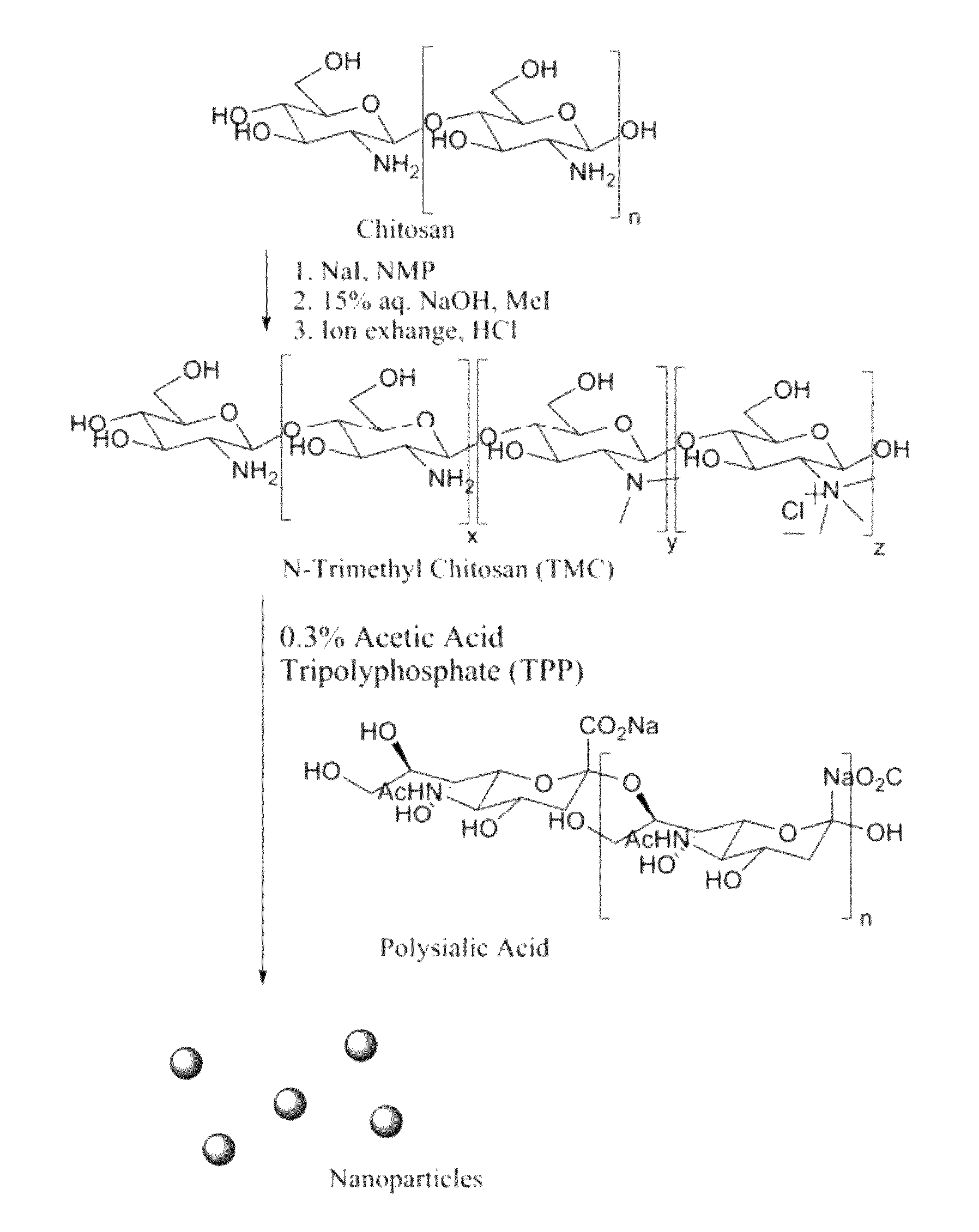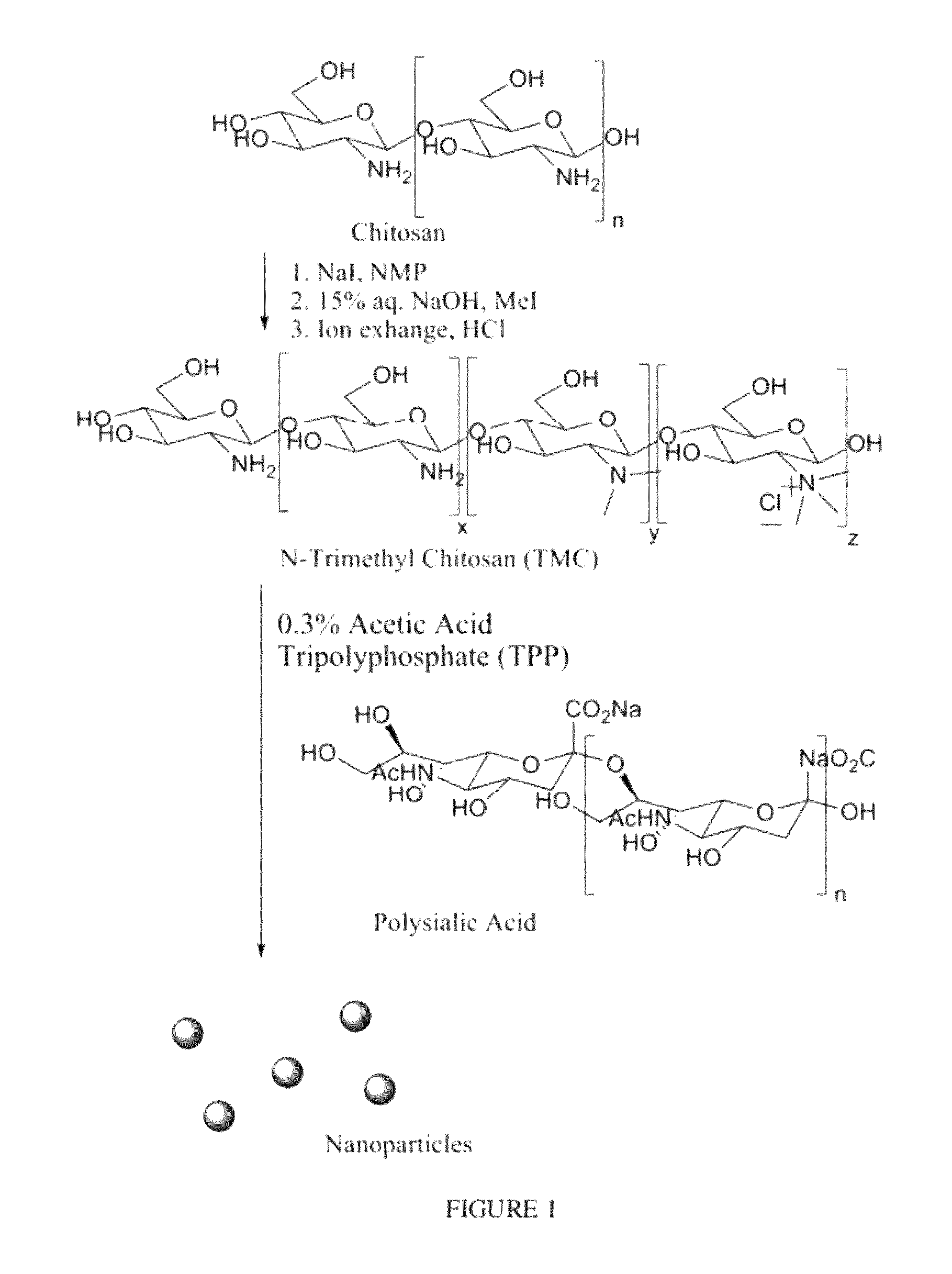Polysialic acid-based N-trimethyl chitosan gel nanoparticles for systemic drug delivery
a technology of n-trimethyl chitosan gel and polysialic acid, which is applied in the field of polysialic acid nanoparticles, can solve the problems of poor stability, limited application of chitosan-based nanoparticles, poor efficacy in vivo, etc., and achieves favorable zeta potential, safe and effective drug delivery, and favorable size
- Summary
- Abstract
- Description
- Claims
- Application Information
AI Technical Summary
Benefits of technology
Problems solved by technology
Method used
Image
Examples
example 1
[0034]TMC synthesis, as well as ionic complexation with TPP to form nanoparticles, may also be seen in FIG. 1. TMC was synthesized according to a one-step method, previously described bed by Sieval et al. A. B. Sieval et al., Carbohydr. Polym. 36, 157 (1998), hereby incorporated by reference. As an example, 0.5 g (0.0031 mol) chitosan and 1.2 g (0.008 mol) sodium iodide were added into 20 ml anhydrous N-methyl pyrrolidinone in a nitrogen purged 3-neck flask. The solution was reacted at 60° C. for 1.5 hrs with a stifling speed of 190 rpm. Then, 4.13 ml 1 M NaOH (0.0041 mol NaOH) and 2.88 ml (0.046 mol) methyl iodide were added and stirring was continued for another 1 hr at 60° C. The reaction solution was then added dropwise to cold ethanol. The yellow precipitate was collected by vacuum filtration. For further purification, the product was dissolved in 15 ml DI water and precipitated again in 62 ml of 1M HCL in ethanol. 0.626 g of white, solid product was obtained after vacuum filtr...
PUM
| Property | Measurement | Unit |
|---|---|---|
| diameter | aaaaa | aaaaa |
| zeta potential | aaaaa | aaaaa |
| zeta potential | aaaaa | aaaaa |
Abstract
Description
Claims
Application Information
 Login to View More
Login to View More - R&D
- Intellectual Property
- Life Sciences
- Materials
- Tech Scout
- Unparalleled Data Quality
- Higher Quality Content
- 60% Fewer Hallucinations
Browse by: Latest US Patents, China's latest patents, Technical Efficacy Thesaurus, Application Domain, Technology Topic, Popular Technical Reports.
© 2025 PatSnap. All rights reserved.Legal|Privacy policy|Modern Slavery Act Transparency Statement|Sitemap|About US| Contact US: help@patsnap.com



